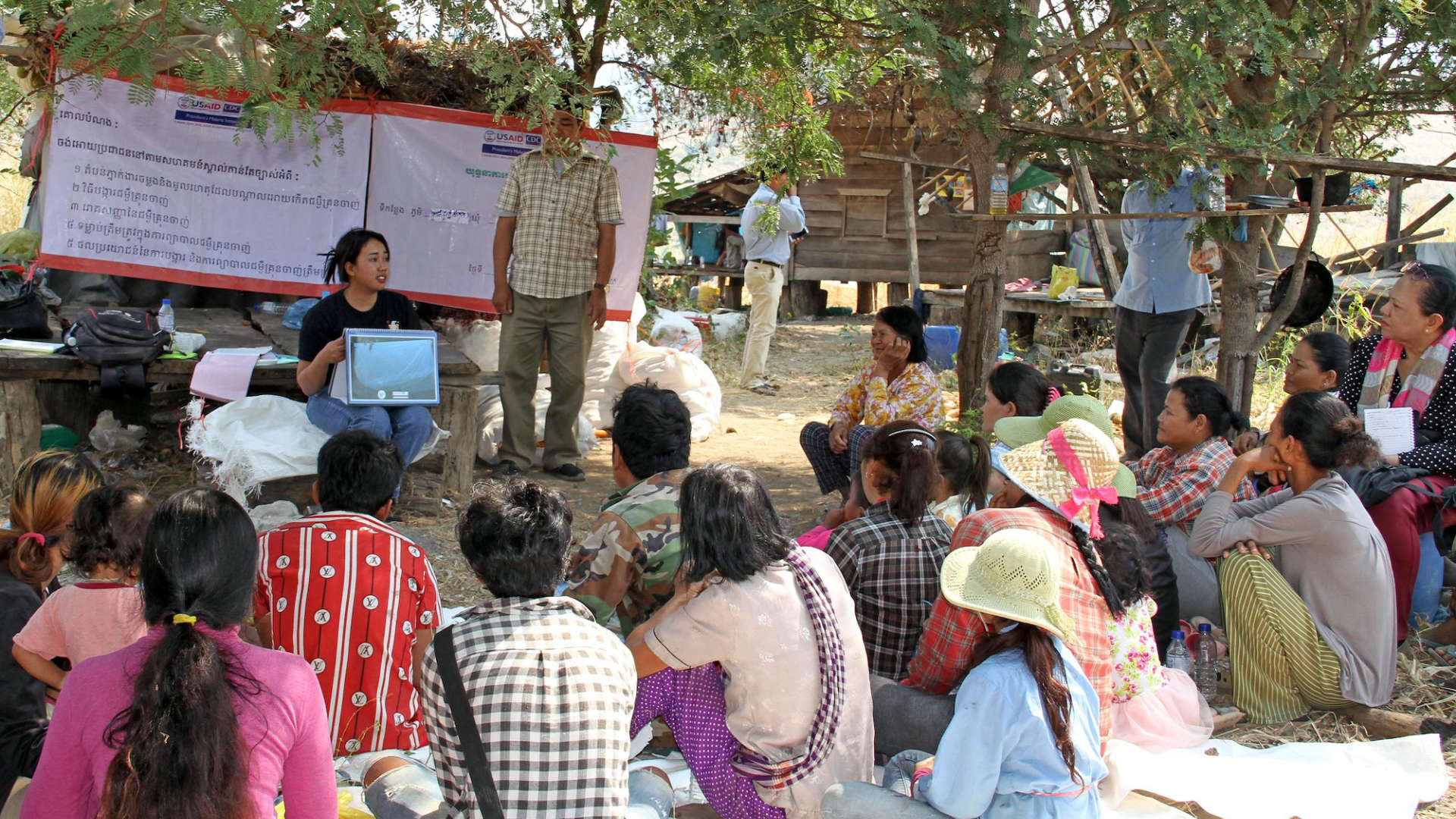
Dennis Carroll
Chief Scientist
During my visit to Cambodia last year, I examined the state of malaria control in the country and provided recommendations for how to sustain the country’s success against the disease. This kind of strategic analysis is not new for me. I spent 15 years leading USAID’s malaria programs, culminating in designing and soliciting support for the U.S. government’s largest malaria program – the President’s Malaria Initiative (PMI), which launched in 2005.
My recommendations largely focused on integrating future malaria surveillance into a broader program focusing on the major causes of fever-inducing, or febrile, illnesses in Cambodia. We presented these recommendations to the Cambodia National Malaria Control Program (CNM), as well as USAID and PMI, and have been endorsed by the CNM to create a concept paper for field validation. URC will lead the effort under the Cambodia Malaria Elimination Project 2 (CMEP2), which URC implements.
My observations and experiences with malaria in Cambodia from 2005 through my most recent trip in 2023 are remarkable.
When I visited Cambodia in 2005 while leading USAID’s malaria programs, I saw hospitals and clinics overflowing with malaria patients during the disease’s high season. Malaria was a major problem, especially in western Cambodia. That year, 102,628 people tested positive for malaria and 382 died from the disease, according to the CNM.
Last year during a trip to Cambodia while representing URC, I noticed how few malaria patients there were. The country experienced 4,053 cases and zero deaths in 2022. There have been no malaria deaths in Cambodia since 2018.
Today, despite recent global setbacks against malaria control in the shadow of the COVID-19 pandemic, Cambodia is on track to eliminate all forms of malaria by 2025. That’s a tremendous success, due in part to the Cambodian government’s commitment to fund and lead malaria elimination efforts, USAID and PMI support, and URC’s program implementation, all working to reduce malaria in Cambodia since 2007.
Other countries also are on a pathway to malaria elimination, including China, Vietnam, and Laos, plus parts of the Americas.
But once a country effectively eliminates malaria, how do they keep the disease at bay for good?

Success of the 1,3,7 Approach
Cambodia’s strategy to eliminate malaria officially began with the adoption of its National Strategic Plan for Elimination of Malaria in the Kingdom of Cambodia in 2011. The plan has been revised and updated multiple times, leading to a core approach in place since 2017; the 1,3,7 strategy includes three time-sensitive and interconnected actions:
- Reporting each malaria case within 1 day of identification;
- Investigating the infection source within 3 days; and
- Coordinating the response to interrupt transmission within 7 days.
The strategy adds specific interventions for high malaria transmission areas, including:
- Providing household testing with rapid diagnostic tests plus microscopy as needed;
- Improving vector control through education and distributing bed nets;
- Supporting additional village malaria workers; and
- Ensuring universal access to malaria diagnosis and treatment.
CMEP2 has paid particular attention to migrant populations moving into and out of forest areas. Forest and farm workers and other mobile and migrant populations are at particular risk for contracting malaria. CMEP2 has focused on educating these groups on the value of sleeping under bed nets, using topical mosquito repellents, wearing long-sleeved shirts and pants whenever they are outside, and seeking testing if they suspect they have malaria.
Shifting to a Strategy to Prevent Reintroduction of Malaria
Cambodia’s intensive efforts against malaria have yielded dramatic results. But to sustain elimination, the focus must shift toward preventing reintroduction and re-establishment (POR) of the disease.
The POR approach assumes that as malaria cases decline and remain low, funding for malaria programs will decrease. Malaria surveillance and service delivery should be integrated into the country’s broader public health system, while Cambodia remains vigilant in identifying every case before malaria can re-establish in receptive areas of the country.
Doctors and health workers in low-resource settings need a revised diagnostic algorithm and POR training to help them distinguish malaria from other common febrile diseases, including the flu, dengue, and Japanese encephalitis. New diagnostic technologies such as hand-held polymerase chain reaction (PCR) analysis devices that can deliver test results for malaria and other prioritized diseases in 60 minutes or less can also help medical staff in their work to prevent re-establishment.
New cooperative partnerships and strategies between Cambodia and neighboring countries where malaria has not been brought under control, including Thailand, Vietnam, and Laos, are critical to define what information and actions are needed to detect and cure new malaria cases. Cambodia also should eventually account for travelers from other regions.
During the next two years, CMEP2 is field testing an integrated febrile control package that combines syndromic algorithms and point-of-capture field diagnostics to determine their efficacy and sustainability in diagnosis of the major causes of febrile illness, including malaria. If validated, this package could greatly enhance the overall management of febrile illness while enabling sustainable malaria control.
The Way Forward
Thanks to an accelerated, sustained campaign, Cambodia stands close to elimination of local transmission of malaria within its borders in the next two years. But to quote leadership coach Marshall Goldsmith, “What got you here won’t get you there.” Once Cambodia has eliminated malaria, the URC-led CMEP2 project will work side by side with the government to keep the disease at bay.



